Sometimes, seemingly small moments can change lives. When Luke Gingerich attended the Equine Affaire Fantasia night show as a child, he saw a big, black horse doing liberty work in the spotlight, where the horse is loose and the trainer cues him without any physical touch.
Today, the Plain City, Ohio, trainer is known for his bridleless dressage and reining performances, showcasing the horse’s ability to perform without tack. When performing with his Quarter Horse mare Tinseltowns Whizard (“Chloe”), Gingerich incorporates everything from sliding stops to canter pirouettes—all without a bridle.
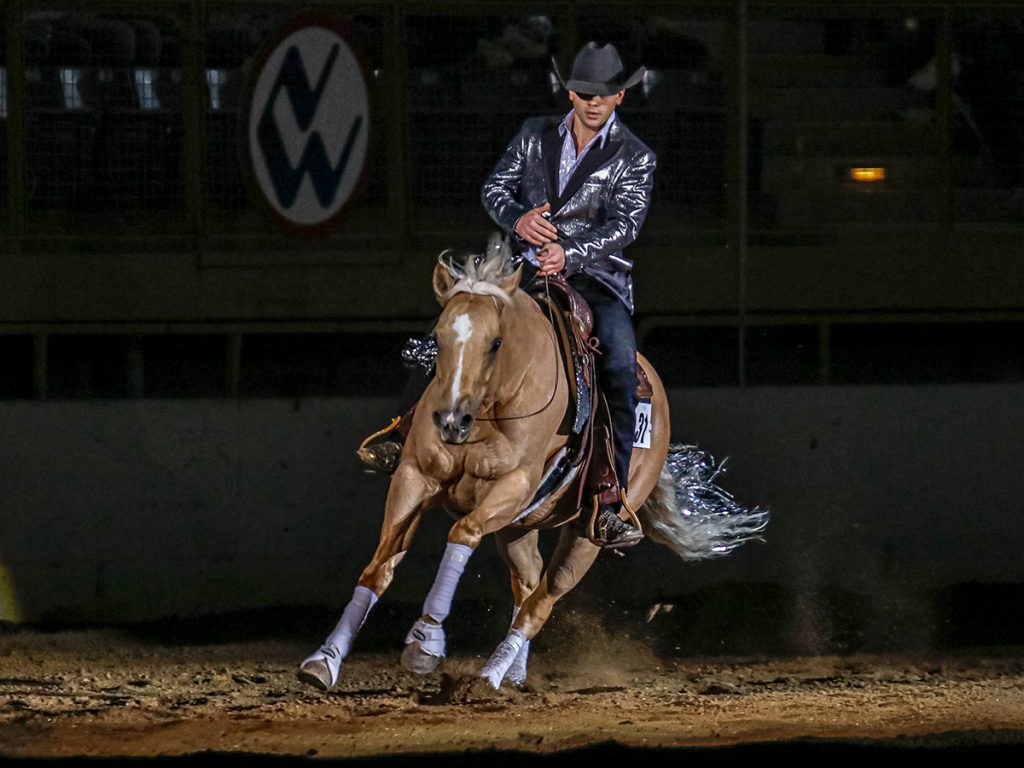
Self-Taught Start
Gingerich loved horses as a child and begged his parents for a pony.
“My parents eventually learned that [my love of horses] wasn’t going to go away,” he says. “They bought me my first Mini when I was 10.”
While his parents lacked a background in horses, his father recognized how badly Gingerich wanted a horse, so he built a small barn in the family’s backyard.
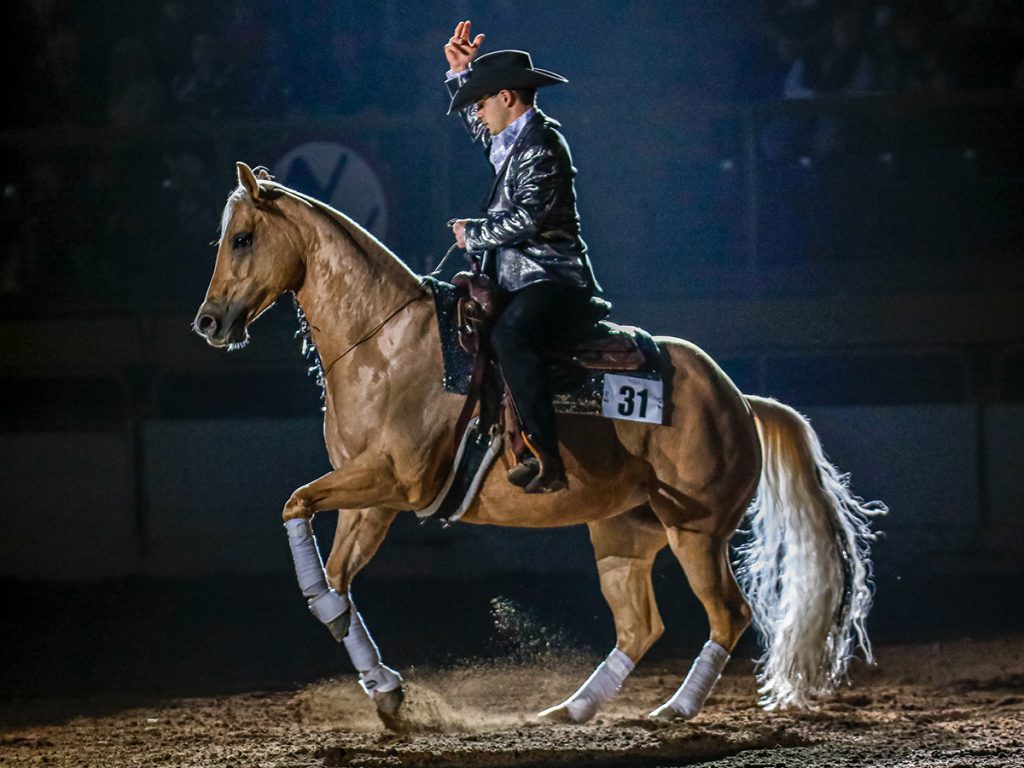
With his pony at home, Gingerich didn’t have the connections or experiences that come with being at a boarding barn or showing in 4-H, but he did have the chance to spend hours practicing and learning. Drawn to the subtlety and refinement of liberty work, he started doing liberty with his Quarter Horse, Rio, at home, then connected with horseman James Cooler, who was based in Hilton Head, S.C.
Gingerich’s mother helped plan a family vacation, and the family traveled from Ohio to South Carolina. He then spent the week working with Cooler and learning liberty with Rio.
Taking the foundations he learned from Cooler, Gingerich returned home and practiced in the field behind his house, then progressed to attending liberty freestyles and competitions. When people started asking Gingerich to teach, he began offerering private coaching on a small scale, which eventually grew into group settings and clinics.
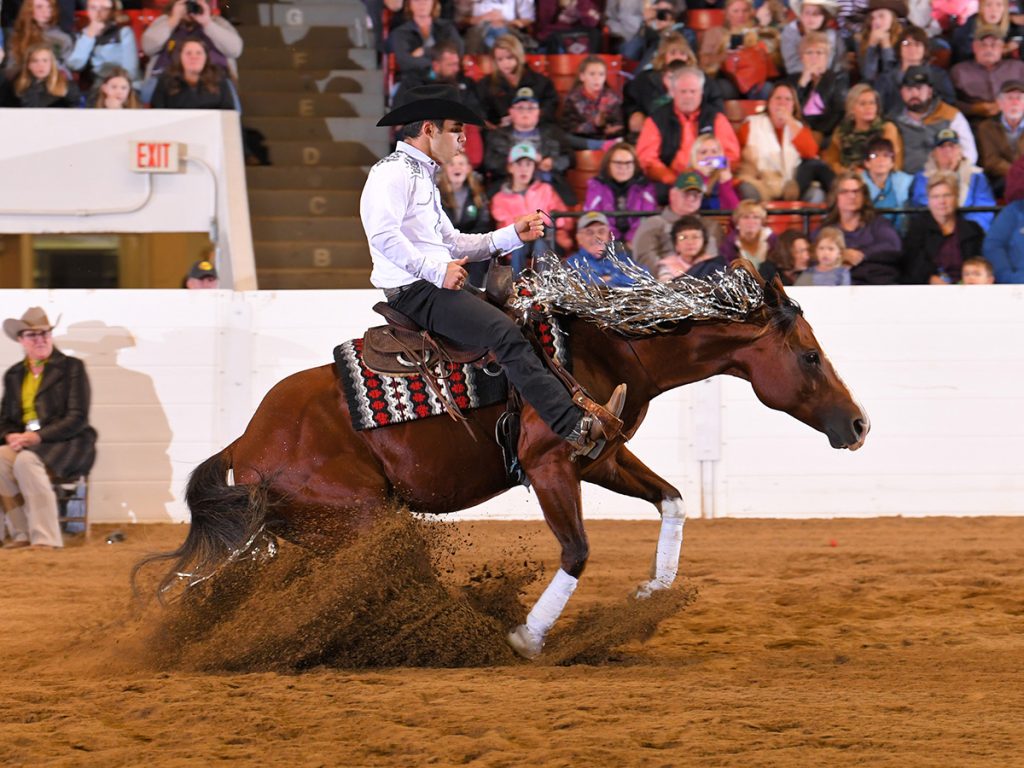
Gingerich started teaching in 2018 and now offers demos, clinics, and online coaching. His training approach, called Performance Horsemanship, is designed for both riders who are focused on competing and those who want to have a better relationship with their horse but who may not want to compete.
“Performance Horsemanship combines relationship-based training with an emphasis on healthy biomechanics and high-level performance,” he explains. “Riders learn how to help their horses become more relaxed and confident while teaching the horses to move in a healthier way.”
The Journey to Bridleless
Gingerich’s interest in liberty was paired with an exploration of bridleless riding.
“They are similar in that you have to learn how to communicate without excessive restraint or force,” he says. “[Bridleless riding] is something I was interested in since I was pretty young, but a driving factor was seeing [videos of] Stacy Westfall doing her bridleless freestyles.”
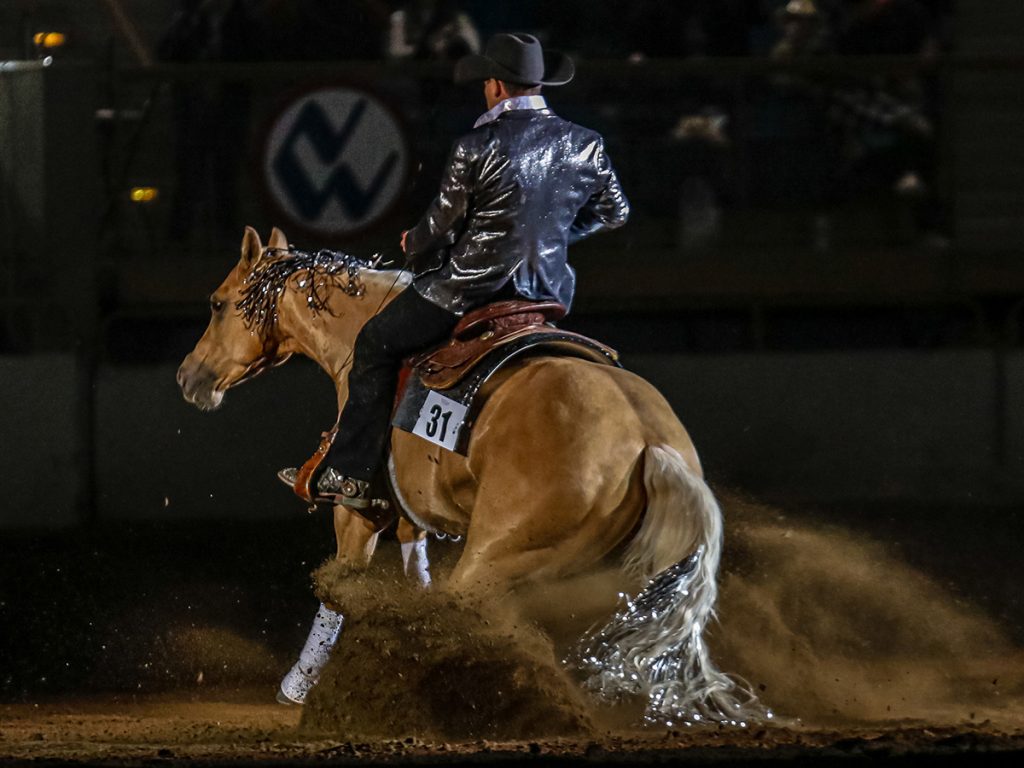
Inspired by the Westfall’s performances, Gingerich started to ask for training videos for birthday and Christmas gifts. In 2017, he connected with Stacy and Jesse Westfall.
“I started riding with them, and they really propelled my understanding of bridleless riding,” he says.
The Westfalls also played a key role in Gingerich’s progression with liberty work. Gingerich was able to bounce ideas off of the Westfalls and get feedback on his work with his horses.
“They help me understand what my horse is thinking and feeling, and help me see things I otherwise wouldn’t see on my own,” he says.
Gingerich bought Chloe in January 2019. While traveling to pick up the mare, Gingerich mentioned to a friend that he thought it would be fun to see if he could start her bridleless. The friend admitted she thought Gingerich was crazy at the time.

Gingerich decided to do it anyway, never putting a bridle on Chloe. He used this approach to see how advanced liberty groundwork would transfer to work under saddle.
“One of my personal missions is working to bring more credibility to liberty work by showing how it can transfer into other areas of horsemanship and the equestrian world at large,” he says.
In starting Chloe bridleless, Gingerich had to break the training process down.
“You can’t make things happen,” he says. “It requires a lot of patience, and it requires being willing to possibly take longer in the beginning.”
He says that his approach can have a snowball effect, and progress later on can come much faster.
“It’s a slow process in some ways, but at the same time, in my opinion, Chloe was doing things after a week of riding that many horses might not be doing for weeks or months,” Gingerich says. “The liberty work I do focuses on teaching them how to use their bodies and go more balanced. That transfers over to their riding.”
Competition Challenges
Gingerich and his horses have performed at venues such as Equine Affaire’s Fantasia, which originally inspired him, and he’s competed at the International Liberty Horse Association Invitational, Congress Open Freestyle Reining, National Western Ram Invitational Freestyle Reining, and more. Since Chloe doesn’t wear a bridle and Gingerich mainly focuses on reining and dressage, the competition options for her are limited.
“It’s a major challenge,” he says.
While he can compete in reining freestyle classes, other reining classes require a bridle. Gingerich hasn’t yet identified any dressage classes open to bridleless riding.
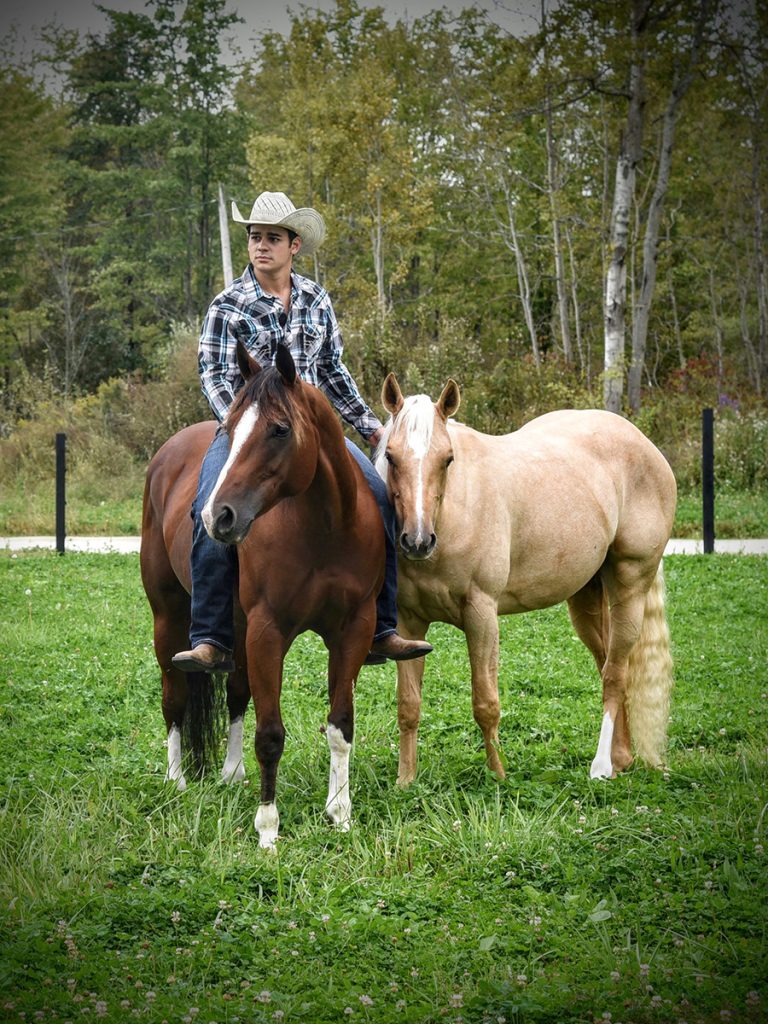
He notes that he would love to see more competitions open to bitless or bridleless rides, but that he also understands some of the safety and liability concerns around changing those rules.
“I also see times you can be safer on an educated horse without some of the headgear,” he says. “I think it’s important to continue the discussion about what we can do to make things better for horses in competition.”
When Gingerich rides Chloe bridleless into an arena, heads quickly turn—but he uses tack for his horses, too. He explains that he isn’t anti-tack or anti-bridle, and that he thinks tack and equipment have a helpful place in supporting and educating horses.
“Working at liberty or riding bridleless does not inherently change the relationship I have with my horses,” Gingerich says. “It makes it more apparent. It holds me more accountable—I have to hold myself to a higher standard and be more conscientious about breaking things down and being clear and consistent to my horse.”
For more info, visit gingerichhorsemanship.com.
This article about Luke Gingerich appeared in the October 2024 issue of Western Life Today magazine. Click here to subscribe!


